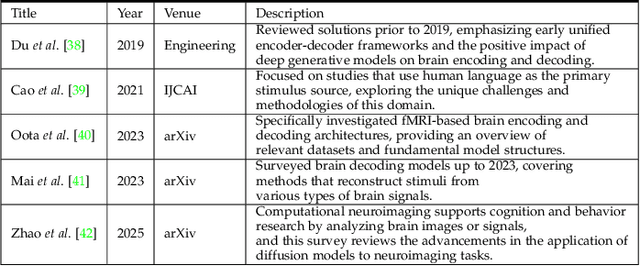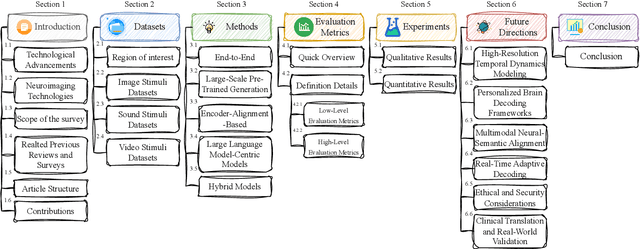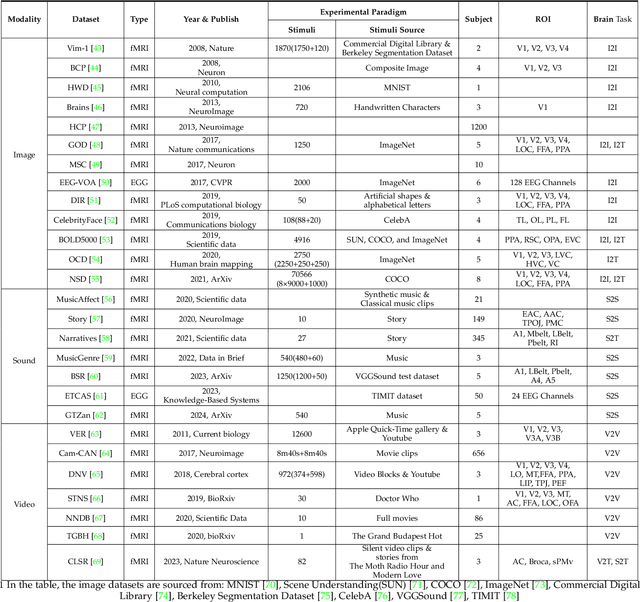Dan Guo
CLASP: Cross-modal Salient Anchor-based Semantic Propagation for Weakly-supervised Dense Audio-Visual Event Localization
Aug 06, 2025Abstract:The Dense Audio-Visual Event Localization (DAVEL) task aims to temporally localize events in untrimmed videos that occur simultaneously in both the audio and visual modalities. This paper explores DAVEL under a new and more challenging weakly-supervised setting (W-DAVEL task), where only video-level event labels are provided and the temporal boundaries of each event are unknown. We address W-DAVEL by exploiting \textit{cross-modal salient anchors}, which are defined as reliable timestamps that are well predicted under weak supervision and exhibit highly consistent event semantics across audio and visual modalities. Specifically, we propose a \textit{Mutual Event Agreement Evaluation} module, which generates an agreement score by measuring the discrepancy between the predicted audio and visual event classes. Then, the agreement score is utilized in a \textit{Cross-modal Salient Anchor Identification} module, which identifies the audio and visual anchor features through global-video and local temporal window identification mechanisms. The anchor features after multimodal integration are fed into an \textit{Anchor-based Temporal Propagation} module to enhance event semantic encoding in the original temporal audio and visual features, facilitating better temporal localization under weak supervision. We establish benchmarks for W-DAVEL on both the UnAV-100 and ActivityNet1.3 datasets. Extensive experiments demonstrate that our method achieves state-of-the-art performance.
Motion is the Choreographer: Learning Latent Pose Dynamics for Seamless Sign Language Generation
Aug 06, 2025Abstract:Sign language video generation requires producing natural signing motions with realistic appearances under precise semantic control, yet faces two critical challenges: excessive signer-specific data requirements and poor generalization. We propose a new paradigm for sign language video generation that decouples motion semantics from signer identity through a two-phase synthesis framework. First, we construct a signer-independent multimodal motion lexicon, where each gloss is stored as identity-agnostic pose, gesture, and 3D mesh sequences, requiring only one recording per sign. This compact representation enables our second key innovation: a discrete-to-continuous motion synthesis stage that transforms retrieved gloss sequences into temporally coherent motion trajectories, followed by identity-aware neural rendering to produce photorealistic videos of arbitrary signers. Unlike prior work constrained by signer-specific datasets, our method treats motion as a first-class citizen: the learned latent pose dynamics serve as a portable "choreography layer" that can be visually realized through different human appearances. Extensive experiments demonstrate that disentangling motion from identity is not just viable but advantageous - enabling both high-quality synthesis and unprecedented flexibility in signer personalization.
Learning Speaker-Invariant Visual Features for Lipreading
Jun 09, 2025Abstract:Lipreading is a challenging cross-modal task that aims to convert visual lip movements into spoken text. Existing lipreading methods often extract visual features that include speaker-specific lip attributes (e.g., shape, color, texture), which introduce spurious correlations between vision and text. These correlations lead to suboptimal lipreading accuracy and restrict model generalization. To address this challenge, we introduce SIFLip, a speaker-invariant visual feature learning framework that disentangles speaker-specific attributes using two complementary disentanglement modules (Implicit Disentanglement and Explicit Disentanglement) to improve generalization. Specifically, since different speakers exhibit semantic consistency between lip movements and phonetic text when pronouncing the same words, our implicit disentanglement module leverages stable text embeddings as supervisory signals to learn common visual representations across speakers, implicitly decoupling speaker-specific features. Additionally, we design a speaker recognition sub-task within the main lipreading pipeline to filter speaker-specific features, then further explicitly disentangle these personalized visual features from the backbone network via gradient reversal. Experimental results demonstrate that SIFLip significantly enhances generalization performance across multiple public datasets. Experimental results demonstrate that SIFLip significantly improves generalization performance across multiple public datasets, outperforming state-of-the-art methods.
EmoSEM: Segment and Explain Emotion Stimuli in Visual Art
Apr 22, 2025Abstract:This paper focuses on a key challenge in visual art understanding: given an art image, the model pinpoints pixel regions that trigger a specific human emotion, and generates linguistic explanations for the emotional arousal. Despite recent advances in art understanding, pixel-level emotion understanding still faces a dual challenge: first, the subjectivity of emotion makes it difficult for general segmentation models like SAM to adapt to emotion-oriented segmentation tasks; and second, the abstract nature of art expression makes it difficult for captioning models to balance pixel-level semantic understanding and emotion reasoning. To solve the above problems, this paper proposes the Emotion stimuli Segmentation and Explanation Model (EmoSEM) to endow the segmentation model SAM with emotion comprehension capability. First, to enable the model to perform segmentation under the guidance of emotional intent well, we introduce an emotional prompt with a learnable mask token as the conditional input for segmentation decoding. Then, we design an emotion projector to establish the association between emotion and visual features. Next, more importantly, to address emotion-visual stimuli alignment, we develop a lightweight prefix projector, a module that fuses the learned emotional mask with the corresponding emotion into a unified representation compatible with the language model. Finally, we input the joint visual, mask, and emotional tokens into the language model and output the emotional explanations. It ensures that the generated interpretations remain semantically and emotionally coherent with the visual stimuli. The method innovatively realizes end-to-end modeling from low-level pixel features to high-level emotion interpretation, providing the first interpretable fine-grained analysis framework for artistic emotion computing. Extensive experiments validate the effectiveness of our model.
Towards Efficient Partially Relevant Video Retrieval with Active Moment Discovering
Apr 15, 2025



Abstract:Partially relevant video retrieval (PRVR) is a practical yet challenging task in text-to-video retrieval, where videos are untrimmed and contain much background content. The pursuit here is of both effective and efficient solutions to capture the partial correspondence between text queries and untrimmed videos. Existing PRVR methods, which typically focus on modeling multi-scale clip representations, however, suffer from content independence and information redundancy, impairing retrieval performance. To overcome these limitations, we propose a simple yet effective approach with active moment discovering (AMDNet). We are committed to discovering video moments that are semantically consistent with their queries. By using learnable span anchors to capture distinct moments and applying masked multi-moment attention to emphasize salient moments while suppressing redundant backgrounds, we achieve more compact and informative video representations. To further enhance moment modeling, we introduce a moment diversity loss to encourage different moments of distinct regions and a moment relevance loss to promote semantically query-relevant moments, which cooperate with a partially relevant retrieval loss for end-to-end optimization. Extensive experiments on two large-scale video datasets (\ie, TVR and ActivityNet Captions) demonstrate the superiority and efficiency of our AMDNet. In particular, AMDNet is about 15.5 times smaller (\#parameters) while 6.0 points higher (SumR) than the up-to-date method GMMFormer on TVR.
SUEDE:Shared Unified Experts for Physical-Digital Face Attack Detection Enhancement
Apr 07, 2025



Abstract:Face recognition systems are vulnerable to physical attacks (e.g., printed photos) and digital threats (e.g., DeepFake), which are currently being studied as independent visual tasks, such as Face Anti-Spoofing and Forgery Detection. The inherent differences among various attack types present significant challenges in identifying a common feature space, making it difficult to develop a unified framework for detecting data from both attack modalities simultaneously. Inspired by the efficacy of Mixture-of-Experts (MoE) in learning across diverse domains, we explore utilizing multiple experts to learn the distinct features of various attack types. However, the feature distributions of physical and digital attacks overlap and differ. This suggests that relying solely on distinct experts to learn the unique features of each attack type may overlook shared knowledge between them. To address these issues, we propose SUEDE, the Shared Unified Experts for Physical-Digital Face Attack Detection Enhancement. SUEDE combines a shared expert (always activated) to capture common features for both attack types and multiple routed experts (selectively activated) for specific attack types. Further, we integrate CLIP as the base network to ensure the shared expert benefits from prior visual knowledge and align visual-text representations in a unified space. Extensive results demonstrate SUEDE achieves superior performance compared to state-of-the-art unified detection methods.
A Survey on fMRI-based Brain Decoding for Reconstructing Multimodal Stimuli
Mar 20, 2025



Abstract:In daily life, we encounter diverse external stimuli, such as images, sounds, and videos. As research in multimodal stimuli and neuroscience advances, fMRI-based brain decoding has become a key tool for understanding brain perception and its complex cognitive processes. Decoding brain signals to reconstruct stimuli not only reveals intricate neural mechanisms but also drives progress in AI, disease treatment, and brain-computer interfaces. Recent advancements in neuroimaging and image generation models have significantly improved fMRI-based decoding. While fMRI offers high spatial resolution for precise brain activity mapping, its low temporal resolution and signal noise pose challenges. Meanwhile, techniques like GANs, VAEs, and Diffusion Models have enhanced reconstructed image quality, and multimodal pre-trained models have boosted cross-modal decoding tasks. This survey systematically reviews recent progress in fMRI-based brain decoding, focusing on stimulus reconstruction from passive brain signals. It summarizes datasets, relevant brain regions, and categorizes existing methods by model structure. Additionally, it evaluates model performance and discusses their effectiveness. Finally, it identifies key challenges and proposes future research directions, offering valuable insights for the field. For more information and resources related to this survey, visit https://github.com/LpyNow/BrainDecodingImage.
EgoTextVQA: Towards Egocentric Scene-Text Aware Video Question Answering
Feb 11, 2025Abstract:We introduce EgoTextVQA, a novel and rigorously constructed benchmark for egocentric QA assistance involving scene text. EgoTextVQA contains 1.5K ego-view videos and 7K scene-text aware questions that reflect real-user needs in outdoor driving and indoor house-keeping activities. The questions are designed to elicit identification and reasoning on scene text in an egocentric and dynamic environment. With EgoTextVQA, we comprehensively evaluate 10 prominent multimodal large language models. Currently, all models struggle, and the best results (Gemini 1.5 Pro) are around 33% accuracy, highlighting the severe deficiency of these techniques in egocentric QA assistance. Our further investigations suggest that precise temporal grounding and multi-frame reasoning, along with high resolution and auxiliary scene-text inputs, are key for better performance. With thorough analyses and heuristic suggestions, we hope EgoTextVQA can serve as a solid testbed for research in egocentric scene-text QA assistance.
AugRefer: Advancing 3D Visual Grounding via Cross-Modal Augmentation and Spatial Relation-based Referring
Jan 16, 2025



Abstract:3D visual grounding (3DVG), which aims to correlate a natural language description with the target object within a 3D scene, is a significant yet challenging task. Despite recent advancements in this domain, existing approaches commonly encounter a shortage: a limited amount and diversity of text3D pairs available for training. Moreover, they fall short in effectively leveraging different contextual clues (e.g., rich spatial relations within the 3D visual space) for grounding. To address these limitations, we propose AugRefer, a novel approach for advancing 3D visual grounding. AugRefer introduces cross-modal augmentation designed to extensively generate diverse text-3D pairs by placing objects into 3D scenes and creating accurate and semantically rich descriptions using foundation models. Notably, the resulting pairs can be utilized by any existing 3DVG methods for enriching their training data. Additionally, AugRefer presents a language-spatial adaptive decoder that effectively adapts the potential referring objects based on the language description and various 3D spatial relations. Extensive experiments on three benchmark datasets clearly validate the effectiveness of AugRefer.
Linguistics-Vision Monotonic Consistent Network for Sign Language Production
Dec 22, 2024Abstract:Sign Language Production (SLP) aims to generate sign videos corresponding to spoken language sentences, where the conversion of sign Glosses to Poses (G2P) is the key step. Due to the cross-modal semantic gap and the lack of word-action correspondence labels for strong supervision alignment, the SLP suffers huge challenges in linguistics-vision consistency. In this work, we propose a Transformer-based Linguistics-Vision Monotonic Consistent Network (LVMCN) for SLP, which constrains fine-grained cross-modal monotonic alignment and coarse-grained multimodal semantic consistency in language-visual cues through Cross-modal Semantic Aligner (CSA) and Multimodal Semantic Comparator (MSC). In the CSA, we constrain the implicit alignment between corresponding gloss and pose sequences by computing the cosine similarity association matrix between cross-modal feature sequences (i.e., the order consistency of fine-grained sign glosses and actions). As for MSC, we construct multimodal triplets based on paired and unpaired samples in batch data. By pulling closer the corresponding text-visual pairs and pushing apart the non-corresponding text-visual pairs, we constrain the semantic co-occurrence degree between corresponding gloss and pose sequences (i.e., the semantic consistency of coarse-grained textual sentences and sign videos). Extensive experiments on the popular PHOENIX14T benchmark show that the LVMCN outperforms the state-of-the-art.
 Add to Chrome
Add to Chrome Add to Firefox
Add to Firefox Add to Edge
Add to Edge